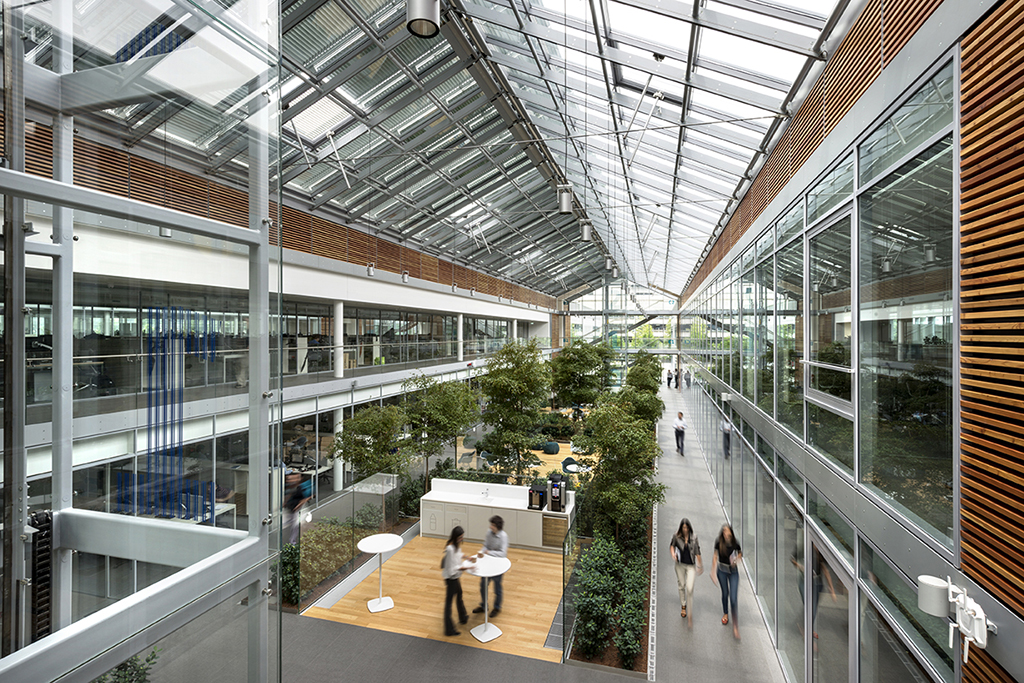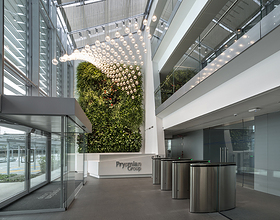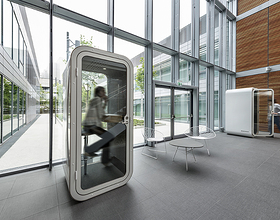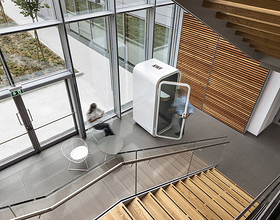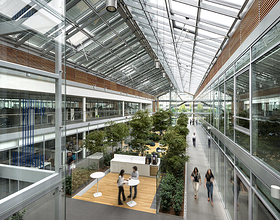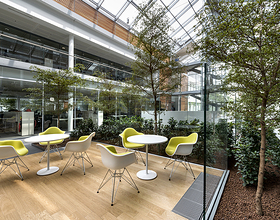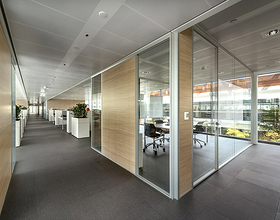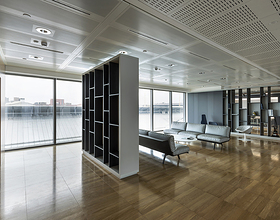PRYSMIAN GROUP HEADQUARTERS
-
This huge structure consists of four main buildings separated by two bioclimatic glasshouses: triple-height glazed spaces featuring plenty of landscaped areas, interaction places and horizontal/vertical linking systems connecting the various buildings serving as offices.
The building’s original design dates back to 2001 and was aimed at holding onto its industrial past by maintaining and modernising the building shell, using the same building technology to recreate new parts that were lacking and renovating the old structures by giving them a brand-new skin.
In 2011, the Prysmian Group, one of the world’s leading companies in the manufacture of cables for the energy, telecommunications and optic fibres industries, decided to present an extremely ambitious conversion project for the area, which involved it being reused and renovated to accommodate offices and laboratories.
Maurizio Varratta’s project involved dividing up the built-on surface in a different way, freeing and hollowing out the building’s bays: this cleaning-up process and the incorporating of glass roofs allowed more effective use of sunlight. The materials it was built out of are partly recycled and all recyclable.
Glasshouses
The most distinctive feature of the Prysmian Group’s headquarters in Milan are the triple-height glasshouses connecting together the office blocks. These fully-functional green ‘havens’ offer notable advantages in terms of natural lighting, controlling the microclimate, and overall energy efficiency.
Work spaces
DEGW’s consultancy on interior design, space planning and choice of furniture interacts smoothly with the simple, minimal, high-tech architecture designed by the Varratta firm, starting with the choice of materials: glass, anodised aluminium, stainless steel and methacrylate. The deliberately austere style of furniture is injected with plenty of colour in the informal areas and glasshouses, where natural light really brings out the colour schemes. The building provided the chance to innovate the basic work procedures.
The vast space - 12,000 m² of offices and 1,200 m² of glasshouses (complete with ancillary areas) - were designed along the lines of smart working for the approximately 600 staff. Most of the surface area is open space (69%), even for executive management. The rest of the space is used for ancillary purposes: meeting rooms (12%) and hubs (19%) or, in other words, the full-height glasshouses linking together the three blocks and providing winter gardens for hosting informal meetings.
Prysmian’s work procedures have truly been revolutionised: previously only 6% of the corporate headquarters were designed as open spaces; most of the company’s operations were carried out in enclosed settings. Before carrying out the space planning and interior design project, DEGW implemented workplace change management procedures in partnership with Methodos. Every change is a process based around interaction that actively engages the people who will live in the new spaces. DEGW gets people involved in the changes and guides them around their new work environment, providing guidelines for optimum use of the new spaces. DEGW considers workplace change management to be a vital process in helping people deal with change. It provides the means of developing a project based around people’s real needs so they can then be shared by every level of the company in order to manage the impact of change on people.
Photo credits: Dario Tettamanzi
1870 Projects

